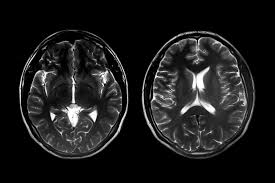
The diagnostic criteria for autism don’t discriminate between boys and girls or between men and women. But recent research suggests that autism spectrum disorder (ASD) may look quite different in girls—so different, in fact, that it can be difficult to diagnose.
One researcher at the Kennedy Krieger Interactive Autism Network raised this question in a report on girls with ASD:1 “Researchers looking at differences between boys and girls with ASD have often not found much difference. Is this because there is no difference, or because only girls with ASD who most resemble boys with ASD are diagnosed and therefore included in studies?”2
:max_bytes(150000):strip_icc():format(webp)/Stocksy_girl-playing-alone_222911-575869075f9b5892e82e5db6.jpg)
One difficulty that researchers experience is that girls with autism seem to behave in ways that are considered acceptable—if not ideal—for girls as opposed to boys. For example, girls with autism may appear to be passive, withdrawn, dependent on others, uninvolved, or even depressed (just as boys do). They may become passionately and even obsessively interested in very specific areas (just as boys do), but they may not gravitate toward the “geeky” areas of technology or math. Sadly, in Western culture, girls who exhibit these behaviors are more likely to be ignored or bullied than diagnosed and treated.
How Girls Differ From Boys With Autism
With all those caveats, however, research is moving forward and providing us with more clues to ASD in girls. Based on recent research, here are a few of the ways in which girls with autism appear to differ from boys with autism:3
- Boys with autism tend to have very repetitive and limited areas of play. Girls with autism are less repetitive and have broader areas of play.
- Girls with autism are more likely than boys to be able to respond to non-verbal communication such as pointing or gaze following. They are also somewhat more focused and less prone to distraction.
- While boys’ social communication issues become challenging very early in their lives, girls may be able to manage the social demands of early childhood but run into difficulties as they enter early adolescence.
- According to the Kennedy Krieger report, Boys with ASD may tend to engage in disruptive behavior to gain objects, while girls with ASD may tend to engage in disruptive behavior to get attention.
- Girls with autism are more likely than boys to also suffer from anxiety and/or depression.
- While girls with autism do have perseverative interests, they are more likely to choose interests (such as TV stars or music) that appear more typical than, for example, many boys’ perseverative interests in schedules, statistics, or transportation.
- Girls with autism are less likely to behave aggressively and more likely to be passive or withdrawn.
- It is fairly common for girls with autism to appear socially competent as youngsters because they are “taken under the wings” of other girls who enjoy mentoring their peers. These mentors often fade out of the picture as they enter adolescence and find other interests or groups of friends.
Shana Nichols, Clinical Director at the Fay J. Lindner Center for Autism and Developmental Disabilities, suggests that girls be evaluated in simple social settings where peers are not likely to jump in and provide support or answer questions on the girl’s behalf. She also suggests that girls who come close to meeting autism criteria when they are young should be re-evaluated as they approach adolescence.
